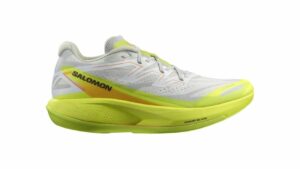Biomechanics to get faster and injury-free
Top athletes are turning to biomechanical analysis to get faster, while others just want to get healthy.
My Jockology column in today’s Globe and Mail takes a look at the growing use of biomechanics technology by elite and recreational athletes, both to enhance performance and address injury problems. The two guys I spoke to were Dana Way, the Winnipeg-based biomechanics expert who travels with the Canadian track team, and Reed Ferber, who runs the University of Calgary’s Running Injury Clinic and has been rolling out a 3-D gait analysis system at clinics in western Canada.
[…] In typical laboratory “motion-capture” systems, small reflective markers are affixed to the athlete’s body at key points such as joints and extremities. Video cameras connected to a computer record the motion of these markers, and use the data to draw a stick-figure that duplicates the essential features of the athlete’s motion.
While traditional systems used a single camera to capture motion in two dimensions, the latest systems use multiple cameras to create a three-dimensional model. Major League Baseball’s Boston Red Sox, for example, are using a 20-camera system to analyze the throwing motion of their pitchers.
At the University of Calgary’s Running Injury Clinic, biomechanist Reed Ferber has been using an eight-camera system with 20 reflective markers to analyze the running gait of his patients and research subjects. But he’s found that for the 3-D gait analysis systems he’s started installing at sports clinics across the country, three specially designed cameras are sufficient. [READ THE WHOLE ARTICLE…]


